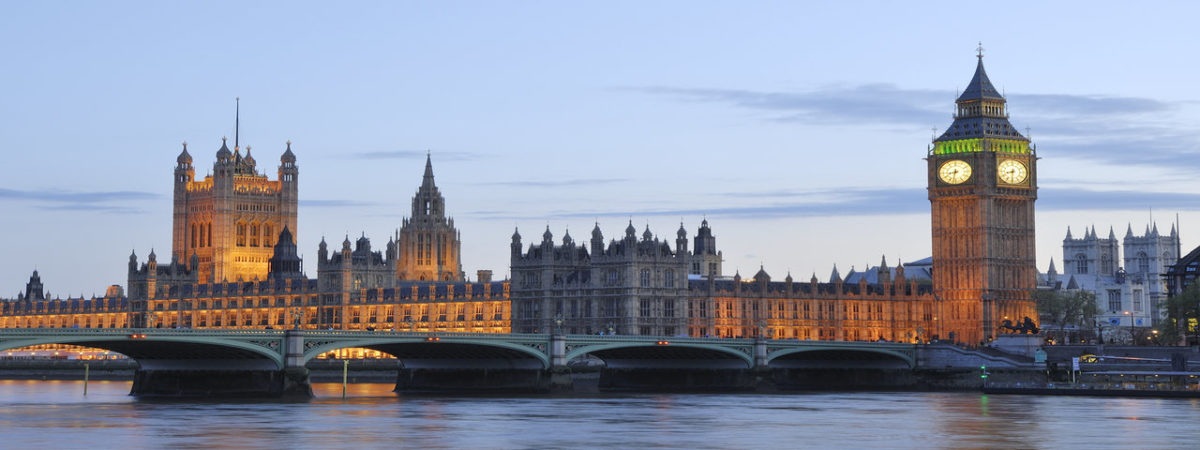HS2 highly unlikely to transform the North
SUGGESTED

Entry prioritises EFTA access and deregulation to boost the UK economy if we left the EU

Reaction to GDP figures

New HS2 research casts serious doubt on the government’s regeneration claims
In Failure to Transform: High-Speed Rail and the Regeneration Myth, Dr Richard Wellings studies the relationship between high-speed rail and economic performance, using the UK’s only example of a high-speed domestic rail service from London to Kent. The results suggest that it is extremely unlikely that HS2 will bring about economic transformation in the North. From 2010-2013, following the introduction of high-speed services, East Kent’s employment rate had fallen over 3 percentage points more than the national average.
Other constraints on the economic impact of HS2 include the negative effects of its enormous tax bill – estimated at £80bn including ‘off-balance sheet’ costs – as well as the risk of new technology undermining its purported benefits by the time of completion. Taken alongside the major flaws in the business case and capacity argument, a project which will only carry roughly 2% of passenger traffic when the full route is completed should be reconsidered urgently.
High Speed 1 and East Kent
- Since the introduction of high-speed services East Kent has performed far worse in terms of employment than the rest of the South East and the rest of the UK. From 2010-2013 the average employment rate was 5 percentage points lower than during the pre-high-speed period examined, compared with falls of 2.1 percentage points for the South East and 1.8 percentage points nationally.
- The impact of fast train services has been too small to counteract other more important economic factors.
Doncaster
- Doncaster has enjoyed a fast rail link for several decades, with journey times to London broadly similar to the times HS2 would provide to some cities on the route. Despite its advantageous location, it was ranked 42nd worst out of 318 boroughs in England in a recent deprivation index.
- Only 23% of Doncaster’s working age residents are qualified to NVQ level 4 or above, compared with a national figure of 35%. Low skills, poor education and little entrepreneurship have seen the town struggle to exploit the opportunities provided by improved transport links. Many places in the North on the HS2 route have broadly comparable socio-economic characteristics, calling regeneration arguments into serious question.
Adverse effects outside the HS2 route
- The areas around the HS2 stations will be redeveloped if the scheme goes ahead. But these new districts will most likely be ‘Potemkin villages’ – examples of fake regeneration built for political reasons using large taxpayer subsidies.
- Resources will be drained from other areas to fund these showpieces, restricting economic development outside public transport corridors. Whilst a large proportion of the costs will be borne by taxpayers as a whole, the benefits will go to a small minority.
Disruptive technology
- It is impossible to predict the development of new technology over the next few decades. This is a strong reason why forecasts of the benefits of HS2 in the 2030s should be treated with a high degree of skepticism. Improvements in IT technology may reduce demand for face-to-face meetings, allowing more people to avoid long-distance travel.
Commenting on the report, Dr Richard Wellings, author of the paper and Head of Transport at the IEA, said:
“The failure of High Speed 1 to achieve its aim of transforming East Kent raises serious questions about the ability of HS2 to ‘rebalance’ the UK economy. The scale of the challenge is huge compared to a relatively small area in the South-East, and many of the northern cities on the route experience more severe social and economic problems.
“Given that the government’s own cost-benefit analysis suggested the project is poor value for money, policymakers should instead focus on improving infrastructure linking northern cities to each other, rather than to London. This would deliver much greater economic benefits.”
Notes to Editors:
To arrange an interview about the report please contact Stephanie Lis, Head of Communications: slis@iea.org.uk or 07766 221 268.
The full report, Failure to Transform: High-Speed Rail and the Regeneration Myth, by Dr Richard Wellings, can be downloaded here.
In August 2013, the IEA published The High-Speed Gravy Train: Special Interests, Transport Policy and Government Spending. The research revealed that lobbying by special interest groups is likely to add an extra £30bn to the cost of HS2, taking the overall bill to approximately £80bn.
In July 2011, the IEA published High Speed 2: The Next Government Project Disaster? The research revealed why the scheme is economically flawed and showed that taxpayers will bear a high proportion of the financial risks.
The mission of the Institute of Economic Affairs is to improve understanding of the fundamental institutions of a free society by analysing and expounding the role of markets in solving economic and social problems.
The IEA is a registered educational charity and independent of all political parties.



